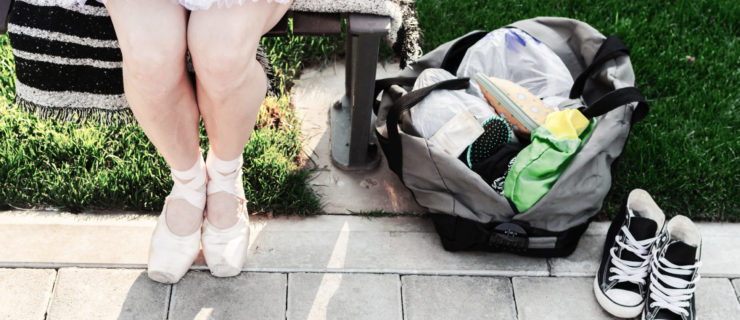How to Deal with Dance-Related Knee Pain
Knee pain is, unfortunately, just one of those things that happens when you’re a dancer. But how can you be sure that an annoying pinch here or a crunch there isn’t something more serious? Dance Spirit turned to Marijeanne Liederbach, PhD, PT, ATC, CSCS—who is also director of the Harkness Center for Dance Injuries at NYU Langone, research assistant professor at NYU School of Medicine, and owner of PT Plus in NYC—for a crash course on knee problems.
What It Is
According to Dr. Liederbach, the top five knee problems that plague dancers are patellofemoral pain syndrome (pain or swelling where the kneecap joins the body); meniscus tears (when the two shock-absorbing, wedge-shaped pieces of cartilage between your thighbone and shinbone tear); patellar tendinitis (when the tendon attaching the bottom of your kneecap to the top of your shinbone becomes inflamed); bursitis (inflammation of the bursae, which are fluid-filled sacs cushioning the front of the knee joint); and sprains of the knee ligaments (which are soft tissue structures that protect the knee from potentially injurious forces).
What Causes It
“The knee is the largest joint in the body, and it’s subjected to very high forces,” Liederbach explains. “Performing a lot of choreo on the floor, landing from jumps, forcing your turnout, even demi-pliés—all of these expose your knees to anywhere from 3 to 12 times your body weight.”
How to Deal
When it comes to avoiding knee injuries, Liederbach has one mantra: “Rest isn’t bad! In fact, adequate rest between training periods is essential.” She stresses the importance of paying attention to your body.
The health of your knees also depends on the strength of your trunk, hips, and ankles, so make sure to give them a little extra love while you cross-train. Liederbach recommends including strengthening moves (like side-lying hip abduction) into your warm-up. “Focusing only on dance-specific conditioning causes you to neglect your body as a whole instrument, and you’ll inevitably become weaker in certain areas.”
 Warm up with side-lying hip abductions (Thinkstock)
Warm up with side-lying hip abductions (Thinkstock)
Liederbach stresses that it’s crucial to consult your doctor if nagging pain doesn’t resolve on its own in two to three days. “Don’t write things off. Many times, these musculoskeletal knee complaints simmer and then blow up.”
A version of this story appeared in the July/August 2018 issue of
Dance Spirit with the title “Your Aches And Pains Addressed: Knee Problems.”



